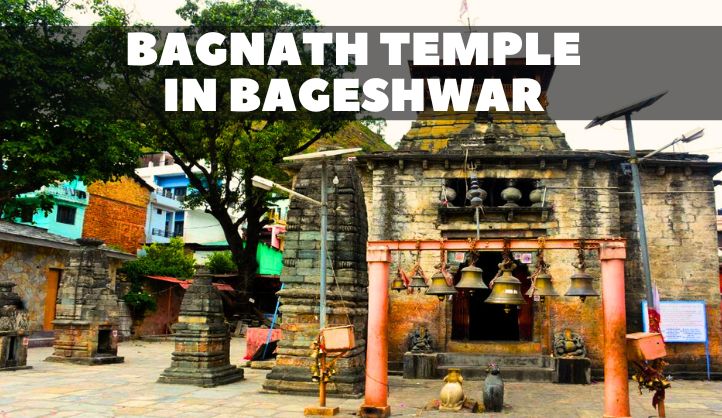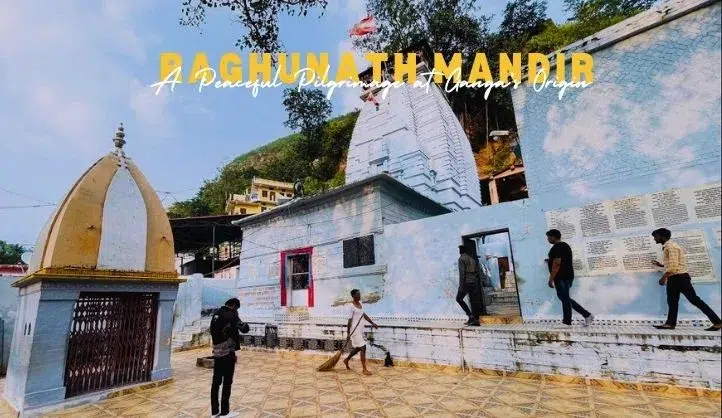Nestled amidst the picturesque Kumaon hills in Uttarakhand, India, lies the sacred Bagnath Temple. Dedicated to Lord Shiva, this ancient shrine holds immense significance for devotees and history buffs alike. Its captivating beauty, intriguing mythology, and architectural marvel make it a must-visit pilgrimage destination.
This blog delves into the captivating story of Bagnath Temple, exploring its historical roots, architectural brilliance, and the legends that have been woven around it for centuries.
The History of Bagnath Temple
The exact origins of Bagnath Temple remain shrouded in the mists of time. Some accounts suggest its existence dates back to the 7th century AD. However, the present structure, built in the Nagara style of architecture, is attributed to King Laxmi Chand of the Chand dynasty who ruled in the 15th century.
The temple also finds mention in the revered Skanda Purana, one of the eighteen major Hindu Puranas. This ancient text reinforces the temple’s significance as a holy site for centuries.
Unveiling the Architectural Splendor
The Bagnath Temple showcases a captivating blend of architectural styles. The towering Shikhara, the spire-like structure, dominates the temple complex and is a prime example of the Nagara style. The sanctum sanctorum, the innermost sanctum of the temple, houses the idol of Lord Shiva. The intricate carvings adorning the walls and pillars depict scenes from Hindu mythology, transporting devotees to a bygone era.
One of the most striking features of the temple is the abundance of bells of various sizes hanging from the facade. These bells, offered by devotees as a symbol of their wishes and prayers, create a mesmerizing symphony when swayed by the gentle breeze.
The temple complex also houses smaller shrines dedicated to other deities, including Goddess Parvati, Lord Ganesha, and Surya, the Sun God. These adjoining shrines add to the temple’s grandeur and provide devotees with the opportunity to seek blessings from various deities during their visit.
The Legend of the Tiger Lord
The name “Bagnath” literally translates to “Tiger Lord.” A fascinating legend is associated with this name. According to Hindu mythology, Sage Markandeya, known for his immortality, performed penance at this very spot to appease Lord Shiva. Pleased by his devotion, Lord Shiva manifested himself in the form of a tiger (Bagh). This legend forms the basis for the temple’s name and highlights the significance of the location for Shiva devotees.
Another legend associated with the temple revolves around its southward orientation. Unlike most Shiva temples facing east, Bagnath Temple faces south. This unique positioning has given rise to various interpretations. Some believe it signifies a specific astronomical alignment, while others consider it to be a symbolic representation of Lord Shiva’s all-encompassing nature.
The Enchanting Saryu-Gomti Confluence
The Bagnath Temple is situated at the holy confluence of the Sarayu and Gomti rivers. This sacred confluence is believed to possess immense spiritual significance. Devotees take a holy dip in the confluence, seeking purification and blessings from the divine rivers. The serene atmosphere created by the flowing water and the chants of devotees creates a truly tranquil experience.
The Annual Shivratri Festival
The annual Shivratri festival transforms the Bagnath Temple into a vibrant hub of devotion. Thousands of devotees throng the temple to celebrate the night of Lord Shiva’s wedding to Goddess Parvati. The temple complex comes alive with night-long prayers, devotional offerings, and traditional cultural performances.
The electrifying atmosphere during Shivratri is a testament to the deep-rooted faith that devotees hold in Lord Shiva and the Bagnath Temple.
Experiencing the Divine at Bagnath Temple
A visit to Bagnath Temple is more than just sightseeing; it’s a spiritual journey. The temple’s captivating architecture, the serene confluence of the rivers, and the vibrant atmosphere transport visitors to a realm of peace and tranquility.
Whether you’re a devout Hindu seeking blessings or a traveler fascinated by history and culture, Bagnath Temple offers a unique and enriching experience.
Planning Your Visit to Bagnath Temple
The Bagnath Temple is easily accessible by road from major cities in Uttarakhand like Almora and Nainital. The nearest railway station is located in Kathgodam, from where taxis and buses are readily available to reach Bageshwar.
The temple remains open throughout the day, with specific timings for performing puja (worship rituals). While visiting, dress modestly and adhere to temple etiquette.
For a truly immersive experience, plan your visit during the Shivratri festival. However, be prepared for larger crowds and make your travel and accommodation arrangements well in advance.
Where to Stay and Eat
Bageshwar offers a range of accommodation options, from budget-friendly guesthouses to comfortable hotels. Homestays provide a unique opportunity to experience local hospitality and gain insights into the Kumaoni way of life.
Several restaurants cater to diverse palates, serving local delicacies of Uttarakhand alongside Indian and international cuisine. Don’t miss the chance to savor Kumaoni staples like Bhatt ki churkani (made from fermented black lentils) and Aloo curry (potato curry).
Responsible Tourism: A Pilgrim’s Pledge
While exploring Bageshwar and the Bagnath Temple, remember to be a responsible tourist. Respect local customs and traditions. Dress modestly when visiting temples. Dispose of waste responsibly to preserve the pristine environment. By following these practices, you can help ensure a sustainable future for this sacred pilgrimage destination.
Conclusion
The Bagnath Temple stands as a testament to faith, history, and architectural brilliance. A visit to this sacred abode promises an experience that nourishes the soul and leaves you with lasting memories. So, pack your bags, embrace the spirit of a pilgrim, and embark on a journey to the enchanting Bagnath Temple.
FAQs About Bagnath Temple
1. What is the significance of Bagnath Temple?
Bagnath Temple is a revered Hindu shrine dedicated to Lord Shiva. The name translates to “Tiger Lord,” referencing a legend where Shiva appeared as a tiger. The temple holds immense importance for Shaivites (devotees of Shiva) and draws large crowds during Shivratri, a major Hindu festival.
2. What is the architectural style of Bagnath Temple?
The temple showcases the Nagara style of architecture, characterized by a towering shikhara (spire) and intricate carvings depicting scenes from Hindu mythology. The abundance of bells hanging from the facade adds a unique charm.
3. Why is the Bagnath Temple facing south?
Unlike most Shiva temples facing east, Bagnath Temple faces south. This unique orientation has sparked various interpretations, with some suggesting astronomical significance and others considering it symbolic of Lord Shiva’s all-encompassing nature.
4. What are some things to do around Bagnath Temple?
Bageshwar, the town where the temple resides, offers a plethora of experiences. Explore other temples, embark on nature treks, delve into the local markets, or simply relax by the Sarayu-Gomti confluence. Witnessing regional festivals like Uttarayani and Nanda Devi Raj Jat Yatra provides a glimpse into the vibrant culture.
5. What are some tips for visiting Bagnath Temple?
Dress modestly and adhere to temple etiquette. The temple is open daily, with specific puja timings. Bageshwar offers diverse accommodation and dining options. Practice responsible tourism by respecting local customs and preserving the environment.









